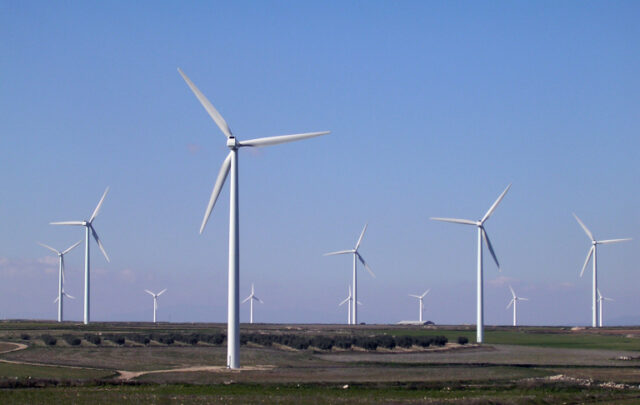On 16 November 2016 the International Energy Agency (IEA) presented its annual ”World Energy Outlook” report (WEO-2016). Two days later on 18 November, Fatih Birol presented WEO-2016 at the Centre for Strategic and International Studies in Washington. On 21 November it was the turn of the Friends of Europe in Brussels to host Dr Birol’s presentation. Birol’s journal continued then to Japan and many other nations. WEO-2016 is a weighty tome and there are few such books that receive this degree of attention.
An invitation made it possible for me to participate in the Brussels meeting. I also had the opportunity to download the tome-like WEO-2016 report that, according to Birol, is focussed on renewable energy. The report’s subtitle, ”Energy-Mix for the Post-COP21 World” indicates that the Paris climate treaty is a central theme. I prepared for the Brussels meeting by studying in detail Chapter 3 of the report, ”Oil market outlook – what’s past is prologue”. It is a pity that the general public cannot get access to WEO-2016 without paying quite a high price for a copy.

Invitees to the Palais des Académies in Brussels
We were welcomed by Dharmendra Kanani from Friends of Europe and here is a part of his speech:
This has become an annual event, a key milestone in our calendar, for us to look at what’s happening on matters of energy. Undoubtedly Paris has fundamentally ushered in a new era on climate change. We know that it is almost a given, it almost represents a global commitment, it’s unprecedented in our lifetime for us to follow this agenda. What we do know is that climate change is fundamentally about supply and demand, and it is also wrapped up in the policy of behavior, system change, and politics.
The World Energy Outlook is a heavy tome, it’s a bible, it’s the document that sets out the analysis for projections of market prices for energy, and it provides an essential evidence base for the kind of policy choices and the investment choices we need to make in the next five to ten years in particular. It sets that kind of grounding basis for our deliberation, and that is why it is so important to have this event, and that is why it is so important to have Fatih Birol with us here today.

I will not follow Birol’s presentation in detail but will choose excerpts from WEO-2016 that address oil and its future. I can mention that Fatih Birol and I discussed the World Energy Outlook report as long ago as 2004 in Berlin when ASPO held its third conference there. Since then we have chanced to meet nearly annually and have continued our discussion each time. This time I could tell him that I had begun to enjoy reading the WEO as I explain below. But first I will show a quotation from the ”Highlights” of Chapter 3 of this year’s WEO:
The pledges made as part of the Paris Agreement do not induce a peak in oil demand before 2040 in the New Policies Scenario. The difficulty of finding alternatives to oil in road freight, aviation and petrochemicals means that, up to 2040, the growth in these three sectors alone is greater than the growth in global oil demand. There are also marked changes in the geography of demand: India becomes the leading source of future growth, while China overtakes the United States to become the single largest consuming country in the early 2030s.
The introduction to Chapter 3 clearly describes society’s demand for oil to service our planet’s growing human population to 2040. If one takes into consideration the increase in liquid volume that occurs as oil passes through refineries then the demand is for 103.5 million barrels per day (Mb/d) or 36.7 billion barrels per year in 2040. In comparison we can state that Norway’s entire oil reserves before exploitation were around 32 billion barrels. Also, the discoveries of oil around the North Pole (if we were to begin serious exploitation there) are estimated to be less than this. In 2015 the oil industry discovered only 2.5 billion barrels worldwide. We can already see that oil prodution will be very limited in future. It is society’s need for oil in the face of these realities that will direct policy decisions in future. In short, it is our need for transport that demands most oil and WEO-2016 discusses various levels of future electric car production/use. The conclusions can be summarised thus:
The global stock of electric cars rises rapidly in the New Policies Scenario, from 1.3 million in 2015 to over 30 million by 2025 and more than 150 million by 2040, displacing 1.3 mb/d of oil. Battery costs decline to less than half today’s level, but the time required to recoup the additional investment cost of electric cars, compared with conventional cars, constrains more rapid deployment. Additional policy support could, however, lead to higher deployment: in the 450 Scenario, the global stock exceeds 710 million in 2040, displacing more than 6 mb/d of oil demand.
Investment in electric vehicles means that the oil requirements of personal transport in 2015, 23.9 Mb/d, only increase to 24.6 Mb/d by 2040. WEO-2016’s ”450-scenario” agrees quite well with Colin Campbell’s and my calculations. This scenario, that ends with global oil production of 103.5 Mb/d in 2040 includes the reduced demand for oil in transport due to increased use of electric vehicles. This means that a maximal investment in electric vehicles reduces our 2040 oil requirements under the 450 scenario to 97 Mb/d. Under that scenario, world population growth leads to increased goods transport. Oil use in sea freight increases from 5.0 Mb/d today to 6.2 Mb/d in 2040 while land freight oil use increases from 16.3 Mb/d to 19.7 Mb/d. Next time a politician tells us we must be fossil free by 2050 we must require him/her to describe the investments in infrastructure that will be made to remove oil use from goods transport. Principally, they must account for the volume of primary energy that will be used in transport then. The oil use by sea transport is also particularly problematic since it has a low quality with a high sulfur content. In WEO-2016 use of natural gas liquids (NGL) is seen as an improvement in climate terms. Use of fuel in aviation is expected to increase from 5.8 Mb/d to 9.3 Mb/d, i.e. from 6% to 9% of total oil use. This means that today’s refineries must increase the proportion of their production that is suitable for use as aviation fuel.
Industry’s oil needs are divided into the need to produce steam and process heat (requiring 5.8 Mb/d) and the need for oil as a raw material in the petrochemical industry (requiring 10.7 Mb/d). For steam and process heat there are large parts of the world that have the possibility of utilizing biomass while it is more difficult to find substitutes for oil in the petrochemical industry. While the use of oil in heating and electricity generation has decreased dramatically in Sweden there is still great such demand outside of Sweden with heating using 7.6 Mb/d while the electricity generation consumes 5.4 Mb/d. This gives large opportunities for replacement of oil use with other sources of energy. The 10.8 Mb/d of oil used in agriculture, construction machinery and similar is not as easy to replace. The world’s need for 103.5 Mb/d in 2040 is a topic of discussion in our new book [in Swedish], “A world addicted to oil”. Making Sweden and the EU fossil free by 2050 requires political decisions and sacrifice. If we are to be honest environmental activists we need to pay an “environmental” fee for the carbon dioxide that we, in effect, import as raw and manufactured goods.
The future production of tight oil (shale oil) is very important for the USA and is summarized thus:
Tight oil production in the United States has been more resilient to the drop in oil prices than anticipated by many. The reaction to any price rebound will not be immediate. US tight oil production in the New Policies Scenario reaches a high point in the late-2020s at just over 6 mb/d. Helped by greater fuel efficiency and fuel switching, the United States all but eliminates net imports of oil by 2040.
The USA is the world’s largest economy as well as the largest consumer of oil and a leading oil producing nation. So it is not surprising that oil and economic activity are closely linked. Without oil the “western” world would not have the welfare it enjoys. In the USA, the future of oil production is said to rest with fracking of tight oil. Both we and the IEA consider the maximal production of tight oil to have occurred in 2015 at 4.3 Mb/d (Figure 14.13 in our new book [in Swedish] “A World Addicted to Oil”). The IEA is surprised that production of tight oil has not declined more rapidly but the gentle decline during the year after March 2015 has subsequently become more rapid. Despite the low oil price during March 2015, 1,231 wells were completed which is clearly fewer than the maximum rate of well completion of 1,723 in November of the previous year. In March 2016 only 485 wells were completed and oil production has now sunk further. 16,788 wells were completed in the period from January 2015 to October 2016 and, of course, this dampened the decline in oil production. One should note that, unlike conventional oil wells, these fracked, tight oil wells cannot give constant rates of oil production. To maintain a constant rate of 4.3 Mb/d of production of tight oil from the USA as a whole would have required around 1,100 new wells per month to be completed. During the 19 months since March 2015 this would have amounted to around 21,000 wells, i.e. 4,100 more than actually came into production.
WEO-2016 states that, during the period 2010-2014, 38,000 wells were drilled and, from available data, we can report that from January 2015 to October 2016 17,546 wells were drilled. At the current rate of 540 wells per month a total of 56,500 wells since 2010 will have been drilled by the end of the year. Of these, 5,155 had not been completed by October 2016. When the IEA states that the USA’s tight oil production will increase back to 4.3 Mb/d to then reach 6 Mb/d in 2020 and 7.6 Mb/d in 2035 they do not discuss how many wells the oil industry must drill to attain these rates of oil production. To maintain constant production at 4.3 Mb/d requires 1,100 new wells per month so that constant production until 2040requires 333,000 wells. If the USA is to increase production to 7 Mb/d then closer to 20,000 new wells per year will be required and the total number of wells to be drilled during 25 years will be 500,000. (Detailed descriptions of these calculations will be published in the English version of our book.) The areas that must be covered with these new wells are enormous and the new wells will no longer find room in the most oil-rich shale formations. Tight oil will be an important source of oil in future, but not to the extent that the IEA predicts.
For me, the most interesting aspect of WEO-2016 is the next highlight:
Declines in production from existing conventional crude oil fields are equivalent to losing the current oil output of Iraq from the global balance every two years, providing a powerful underlying stimulus for the current rebalancing of the oil market. Yet there is also the risk of an over-correction: the volume of conventional crude oil resources receiving development approval in 2015 fell to its lowest level since the 1950s and the data for 2016 show no sign of a rebound. There is scope to recover from one or two years of suppressed project approvals, but with the level of demand growth seen in the New Policies Scenario, prolonging this into 2017 or beyond could lead to more volatile oil prices and a new boom-and-bust cycle for the industry.

Table 3.11 in WEO-2016 shows how the future oil demand of 103.5 Mb/d will be met. First we should note that oil production from existing wells will decline by 4.3% per year which, by 2040, will amount to a loss of 45.5 Mb/d. Committed oil development projects are estimated to deliver 5.8 Mb/d in 2020 but by 2040 the production from these will have fallen to 1.4 Mb/d. Thus, an additional 40.3 Mb/d of new oil production is required by 2040 and this will come from projects not yet approved for development with 14.5 Mb/d of this being from fields that have not yet been discovered. In WEO-2015 it was stated that new discoveries were required according to the figure below for 16 Mb/d to be produced in 2040. In “A World Addicted to Oil” we show that it should be possible, theoretically, to produce 14 Mb/d if the expected discoveries are actually made. But we now know that, during 2015, only 2.5 billion barrels of oil (Gb) were discovered compared to the 8.5 Gb expected. This year the IEA’s discovery expectations are once again at 8.5 Gb with annual discoveries predicted to decline to 6.9 Gb during the 2020s. During the 2030s annual discoveries are expected to be up at 8.5 Gb again. Thus, production in 2040 of 14.5 Mb/d from as yet undiscovered oil fields is unrealistic. Production of 25.8 Mb/d will remain from already discovered fields for which no decision has yet been made to put them into production. In a detailed analysis in “A World Addicted to Oil” we have shown that production from such fields can be, maximally, 15 Mb/d in 2040.

The IEA states that the blue discoveries are needed in order to produce 24 Mb/d of oil in 2040 from such yet undiscovered fields.

In Figure 3.16 the IEA shows for the first time what will happen if its unrealistic wishful thinking does not become reality during the next 10 years. Peak Oil will occur even if oil from fracked tight sources, oil sands and other sources are included. It is this figure that led me to congratulate Fatih Birol on a good report. My comment was that the IEA was rapidly approaching the same viewpoint as that held by the Global Energy Systems (GES) research group of Uppsala University. I cannot cite a reply from Fatih Birol, but I can say that a twinkle in his eye and a smile were there to be interpreted and I have chosen to interpret them in my own way. Our calculations of oil production volumes of 2004 have been supplemented since then with oil and natural gas liquids production from fracking but there have been no other major changes. The IEA has gone from predicting in 2004 a future rate of oil production of 121 Mb/d down to, now, maybe 80 Mb/d including from fracking.
In the panel that commented on WEO-2016 was Maros Sefcovic (second from left) who works with programmes regarding sustainable development for the EU. It was mainly the EU nations’ political roll that he discussed. Jane Burston (far left), a climate expert from the UK, discussed future “tipping points” while Jenny Larsson (second from the right) from the Swedish company Vattenfall mainly discussed the electricity market.

The only person who discussed oil was Eric Waeness as Chief Economist for Statoil. In its future prognoses, Statoil sees “Peak Demand” but not “Peak Production”. I have discussed this prognosis with Erik at a NOG meeting in Stockholm. He gladly accepted a copy of our book “A World Addicted to Oil” and promised to read it and respond with comments.
It was wonderful to participate in the Brussels meeting when the IEA’s head Fatih Birol presented WEO-2016. This report is the first one where they warn of a “peak” in oil production. Therefore, after struggling for 15 years to promote awareness of Peak Oil this report and meeting were rather special for me.







